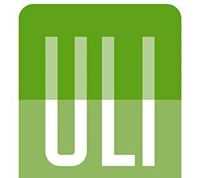Sebring is Set to Improve Drinking Water Plant Using Ohio EPA Loan Fund
WASHINGTON, D.C. – October 26, 2015 – (RealEstateRama) — Sebring will construct a new filter-to-waste treatment system for their drinking water plant helping to further purify local water supplies. The improvements are being funded with a low-interest loan from Ohio EPA.
The proposed project involves changing the filter backwash-to-waste piping system to provide an air gap, protecting filters from microbial contamination, installing programmable filter controls to optimize plant performance and replacing two pumps in the filter backwash waste sump. The project is expected to be completed in one year.
Created in 1998, the Water Supply Revolving Loan Account (WSRLA) provides below market interest rate loans for compliance related improvements for community water systems and non-profit non-community public water systems. The reduced interest rate on this $1.46 million loan will save Sebring about $1.43 million compared to a conventional market rate loan.
Ohio EPA’s revolving loan funds are partially supported by federal grants and designed to last indefinitely through loan repayment and bond investments. The WSRLA is managed jointly by Ohio EPA’s Division of Environmental and Financial Assistance and the Division of Drinking and Ground Waters, with assistance from the Ohio Water Development Authority. Ohio EPA is responsible for program development and implementation, individual project coordination and environmental and other technical reviews/approvals of projects seeking funds. The Ohio Water Development Authority provides financial management of the fund.
More information about the WSRLA is available by visiting http://epa.ohio.gov/defa/EnvironmentalandFinancialAssistance.aspx.
-30-
The Ohio Environmental Protection Agency was created in 1972 to consolidate efforts to protect and improve air quality, water quality and waste management in Ohio. Since then, air pollutants dropped by as much as 90 percent; large rivers meeting standards improved from 21 percent to 89 percent; and hundreds of polluting, open dumps were replaced with engineered landfills and an increased emphasis on waste reduction and recycling.
PUBLIC INTEREST CENTER, (614) 644-2160
MEDIA CONTACT: Linda Fee Oros
CITIZEN CONTACT: Mike Settles
















